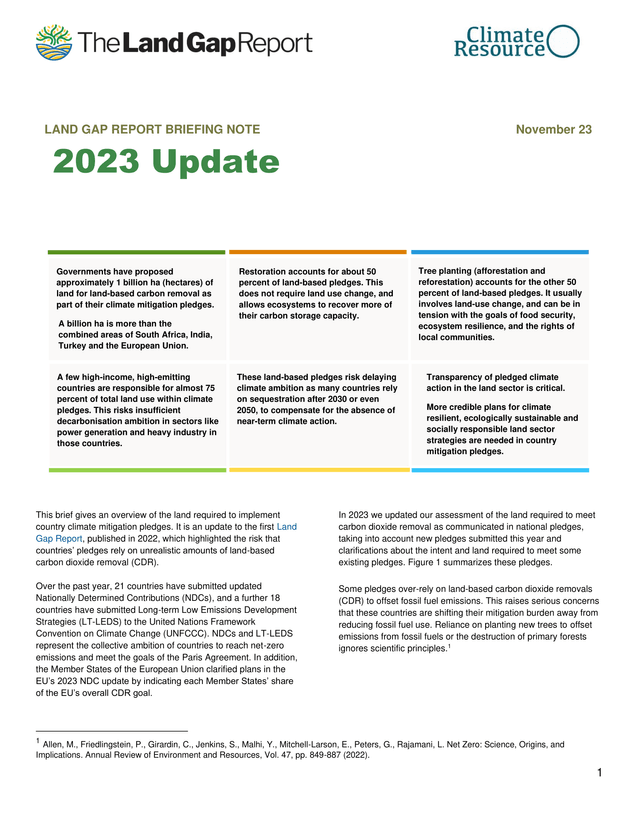
Land Gap Report Briefing Note:
2023 Update
About the Update
We reviewed climate pledges for all UN Members. This includes 197 countries as well as the EU. From this review of pledges, it was possible to quantify the land area requirements for 142 pledges that relied on carbon dioxide removal, including land and forest restoration, reforestation, and for a very small number of countries, BECCS.
The update takes into account new country pledges submitted during the last year and analysis that provides new information on previous pledges. It highlights that a few high and upper-middle income countries are responsible for over 85 per cent of total land use required to deliver climate pledges. These pledges over-rely on land-based carbon dioxide removal in latter decades to reach their net-zero goals, in many cases with little detail about how this will be delivered. This risks insufficient near-term climate action in all sectors and makes clear the need for more credible pathways to net zero
Key Messages
Governments have proposed approximately 1 billion ha (hectares) of land for land-based carbon removal as part of their climate mitigation pledges.
A billion ha is more than the combined areas of South Africa, India, Turkey and the European Union.
Transparency of pledged climate action in the land sector is critical.
More credible plans for climate resilient, ecologically sustainable and socially responsible land sector strategies are needed in country mitigation pledges.
